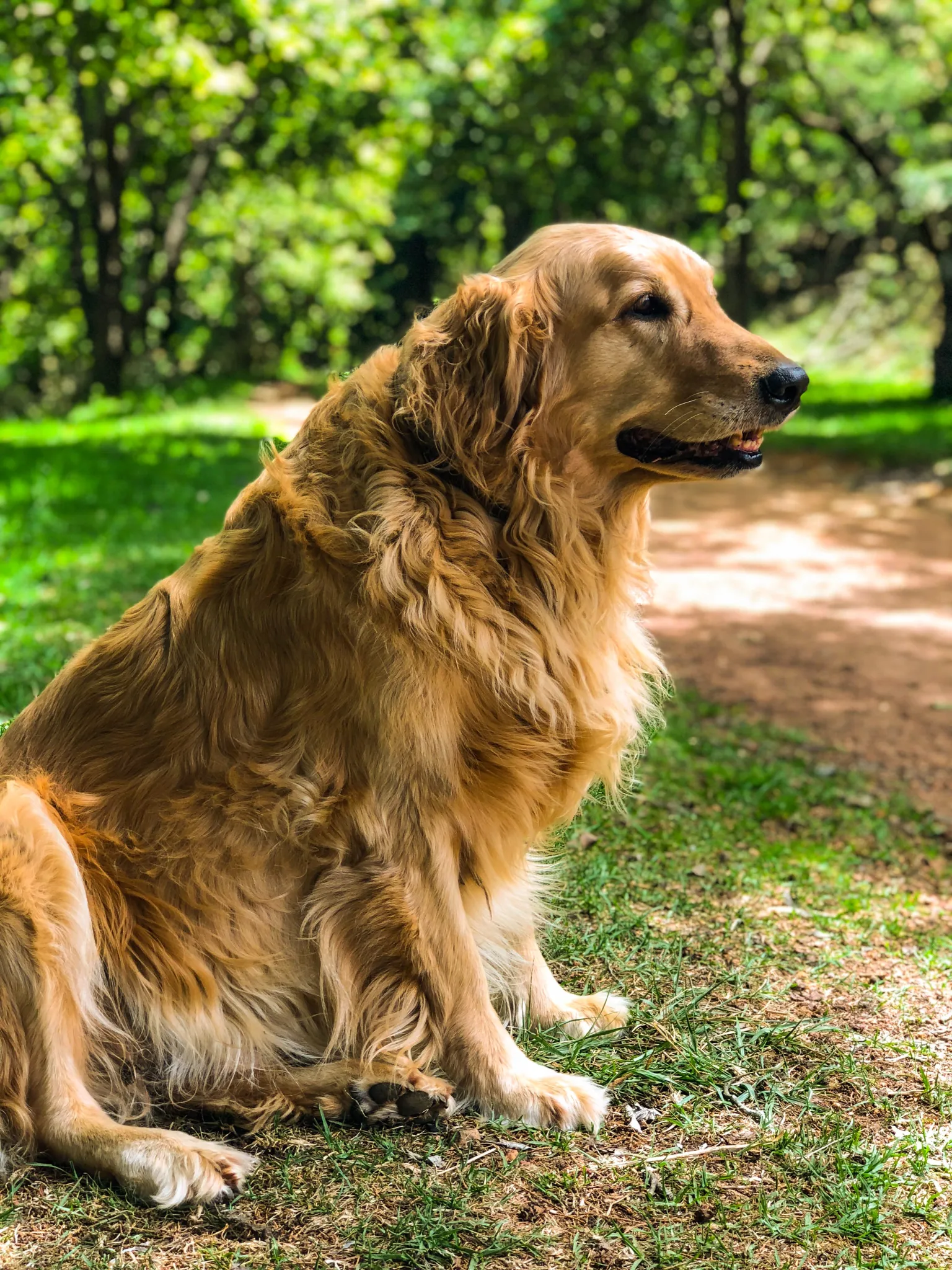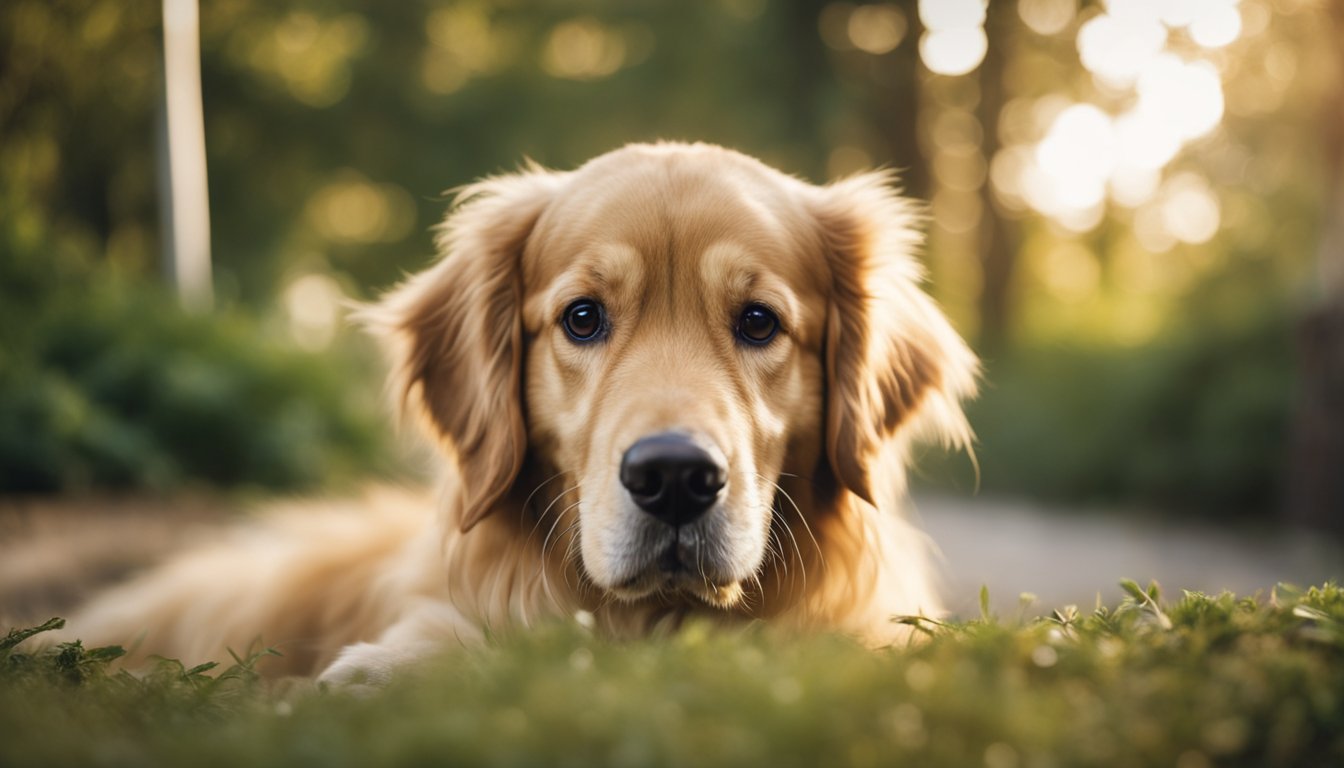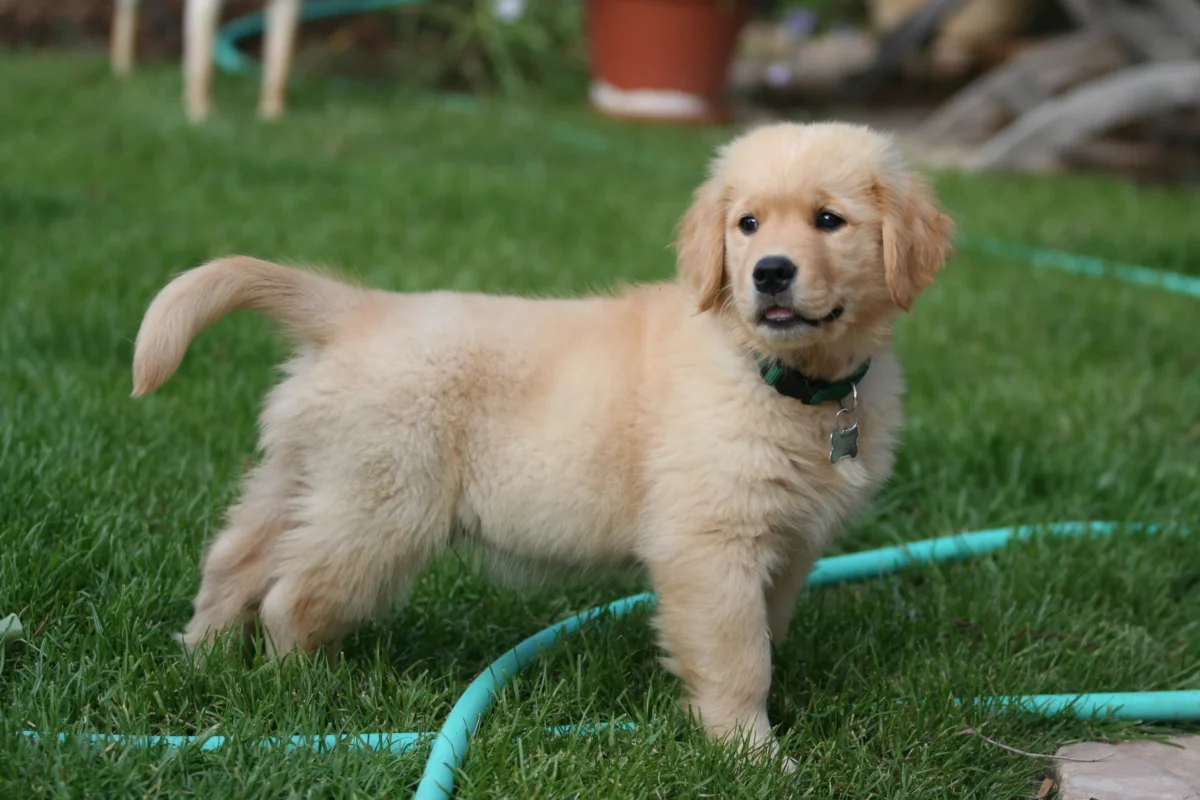If you’re a proud owner of a Golden Retriever, you may be wondering when your furry friend will start growing long hair. Golden Retrievers are known for their lustrous coats, which come in a range of shades from cream to gold. Their coats are also thick and fluffy, making them one of the most popular dog breeds for families. In this article, we’ll explore the timeline for when Golden Retrievers grow long hair and how to maintain a healthy coat.
Understanding Golden Retriever’s Hair Growth is important for their overall health and grooming. Golden Retrievers start growing long hair on their tails at about three months of age, and their feathers on their legs, chest, and stomach start showing at about one year. The exact time frame, hair length, and color shade vary depending on the puppy’s genes. Some dogs might sport longer or heavier coats than others. In this article, we’ll dive into the different stages of a Golden Retriever’s coat and what you can expect as your pup moves through each phase.
Maintaining a Healthy Coat is essential for your Golden Retriever’s overall health and happiness. Regular grooming sessions, a balanced diet, and proper hydration are critical to keeping your dog’s coat healthy and shiny. In this article, we’ll provide you with tips on how to maintain your Golden Retriever’s coat and what to do if you encounter any common coat concerns.
Key Takeaways
- Golden Retrievers start growing long hair on their tails at about three months of age.
- Maintaining a healthy coat involves regular grooming sessions, a balanced diet, and proper hydration.
- Common coat concerns include shedding, matting, and skin issues.
Understanding Golden Retriever’s Hair Growth
https://www.youtube.com/watch?v=CTMX8RVW7i0&embed=true
Golden Retrievers are known for their beautiful, flowing coats of fur. However, as a Golden Retriever owner, you may be wondering when your furry friend will grow long hair. In this section, we will explore the growth stages of a Golden Retriever’s hair, how genetics and lineage influence hair growth, and the variations in their coat.
Growth Stages
Golden Retrievers begin growing their full coat at around three months of age. Feathering will appear first on the tail followed by the stomach, chest, and legs within their first year. The exact time frame, coat length, and color will depend on the individual dog, and there are many variations within adult Golden Retrievers. The length of time it takes for Golden Retriever hair to grow can vary depending on factors such as genetics, diet, and grooming practices.
Genetics and Lineage Influence
Genetics plays a significant role in the length and thickness of a Golden Retriever’s coat. Purebred Golden Retrievers are more likely to have a long, flowing coat than mixed breeds. The lineage of your Golden Retriever also plays a role in their coat’s appearance. For example, English Golden Retrievers tend to have a thicker and longer coat than Canadian Golden Retrievers.
Coat Variations
Golden Retrievers can have different variations in their coat. Some may have a shorter, more manageable coat, while others may have a longer, flowing coat. Labrador Retrievers, which are closely related to Golden Retrievers, also have a shorter, denser coat. Long-haired Golden Retrievers have longer hair than standard Golden Retrievers. However, it’s important to note that not all long-haired Golden Retrievers are purebred.
In conclusion, the timing of a Golden Retriever’s full hair growth varies depending on the individual dog. Genetics and lineage also play a significant role in the appearance of their coat. Whether you have a puppy or an adult Golden Retriever, it’s important to take care of their coat by providing a healthy diet and regular grooming.
Maintaining a Healthy Coat
https://www.youtube.com/watch?v=Q7QRdtoMdMY&embed=true
Golden Retrievers are known for their beautiful, long, and shiny coat. Proper maintenance is key to keeping your furry friend’s coat healthy and shiny. In this section, we will discuss the essential elements of maintaining a healthy coat.
Dietary Requirements
A healthy diet is critical for maintaining a healthy coat. A high-quality dog food that contains protein, omega-3, and omega-6 fatty acids is essential. These nutrients help to maintain a shiny coat and healthy skin. You can also supplement your dog’s diet with fish oil, coconut oil, or olive oil. Vitamin supplements, especially Vitamin A, can also help to maintain a healthy coat.
Grooming Essentials
Proper grooming is essential to keep your Golden Retriever’s coat healthy. Brushing your dog’s coat regularly can help to prevent tangles and mats. It also helps to remove loose hair and distribute natural oils throughout the coat. During shedding season, you may need to brush your dog’s coat more frequently. Bathing your dog regularly with a high-quality dog shampoo can also help to maintain a healthy coat. You should also trim your dog’s coat regularly to prevent matting and to keep your dog comfortable.
Health Considerations
Regular visits to the veterinarian are essential for maintaining a healthy coat. Your veterinarian can check for any underlying health issues that may affect your dog’s coat, such as allergies or skin conditions. A healthy dog will have a soft undercoat and a shiny outer coat. Proper nutrition, grooming, and environment are critical for maintaining a healthy coat.
In summary, maintaining a healthy coat requires a proper diet, regular grooming, and proper healthcare. A healthy coat not only adds to your dog’s beauty but also helps to regulate their body temperature and improve blood circulation. With proper care, your Golden Retriever will have a shiny and healthy coat that you can be proud of.
Golden Retriever Coat Types
https://www.youtube.com/watch?v=HBaoGchQKYU&embed=true
Golden Retrievers are known for their beautiful, thick coats that come in various shades of gold, cream, and red. They have a double coat, consisting of a thick undercoat and a longer, coarser outer coat. The length and texture of a Golden Retriever’s coat can vary depending on its breed variation.
Field Golden Retriever
« Why Do Dogs Howl: Understanding the Reasons Behind This Common Behavior
Best Age to Breed a Golden Retriever: Tips and Guidelines »
Field Golden Retrievers have shorter, thinner coats compared to their English and Canadian counterparts. Their coats are designed for hunting and fieldwork, and are less prone to matting and tangling. They have less feathering on their legs and chest, and their tails are usually straighter and shorter.
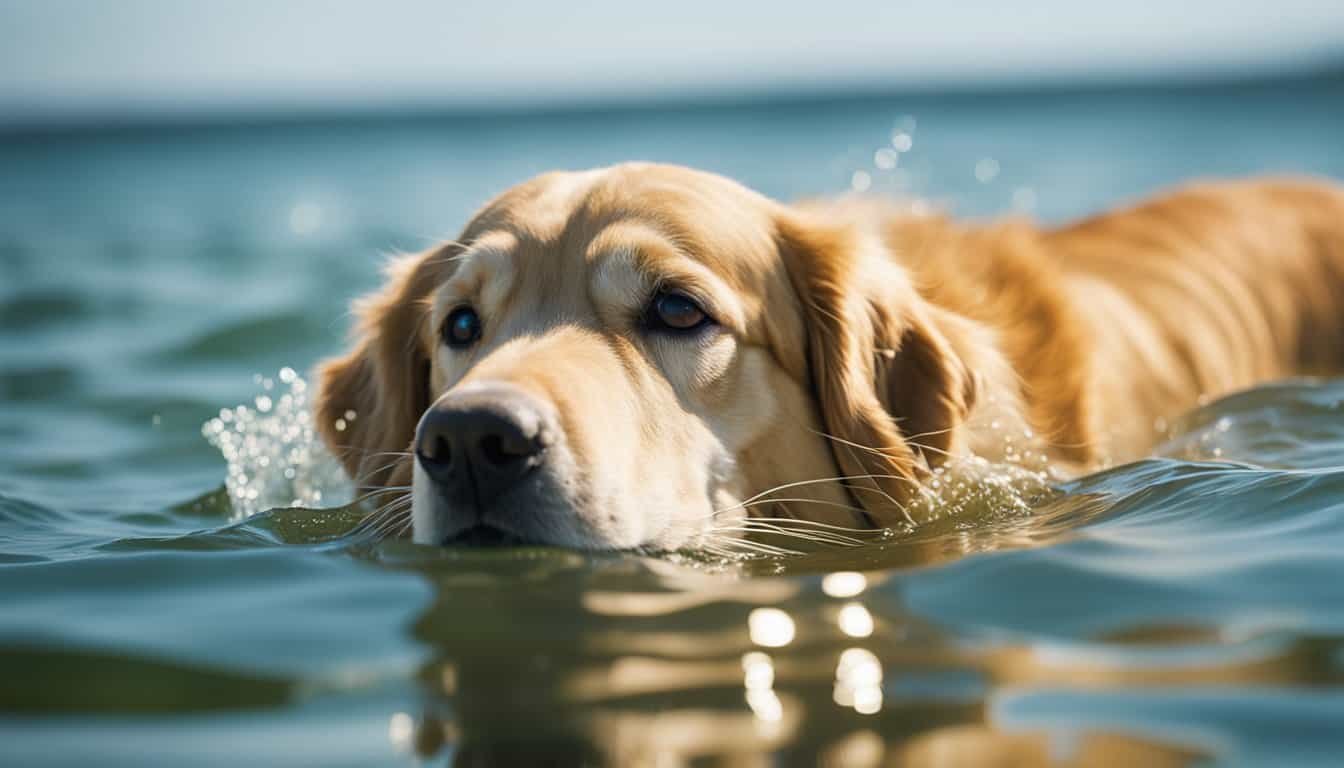
English Golden Retriever
English Golden Retrievers have longer, thicker coats with more feathering on their legs and chest. They are known for their luxurious, flowing coats that are soft to the touch. Their tails are longer and more feathered than Field Golden Retrievers.
Canadian Golden Retriever
Canadian Golden Retrievers have a slightly different coat type compared to their American and English counterparts. They have a thicker undercoat and longer guard hairs, which gives them a fuller, more luxurious coat. They also have more feathering on their legs and chest, and their tails are longer and more feathered.
Overall, the length and texture of a Golden Retriever’s coat can vary depending on its breed variation. It’s important to note that a Golden Retriever’s coat will change as it grows from a puppy to an adult. Puppies have soft, fluffy coats that will shed as they grow into their full coat. The full coat of a Golden Retriever is typically achieved by 18-24 months of age.
The color of a Golden Retriever’s coat can also vary, ranging from light cream to deep red. Regardless of the color, all Golden Retrievers have a beautiful, golden coat that is a hallmark of the breed.
Common Coat Concerns
As a Golden Retriever owner, it is important to be aware of common coat concerns to ensure that your furry friend has healthy and lustrous hair. Here are some of the most common coat concerns that you may encounter:
Shedding and Matting
Golden Retrievers have a double coat that helps regulate their body temperature and protect them from debris. However, this also means that they shed a lot, especially during shedding season. Regular brushing and grooming can help prevent matting and keep shedding under control.
Skin Allergies and Conditions
Some Golden Retrievers may develop skin allergies or conditions that can affect their coat. If you notice excessive itching, redness, or flakiness on your dog’s skin, it is important to consult with a veterinarian to determine the underlying cause and appropriate treatment.
Coat Color Changes
Golden Retrievers typically have a cream to golden coat color, but their hair color may change as they grow older. According to Breeds Insider, it may take approximately 1.5 years for a Golden Retriever’s coat to fill out and reach its full growth potential. In addition, the timing of coat color changes may vary depending on the dog’s bloodline and heritage.
Overall, maintaining a healthy coat is crucial for your Golden Retriever’s health and well-being. Regular grooming, proper nutrition, and addressing any skin or coat concerns promptly can help ensure that your furry friend has healthy and shiny hair.
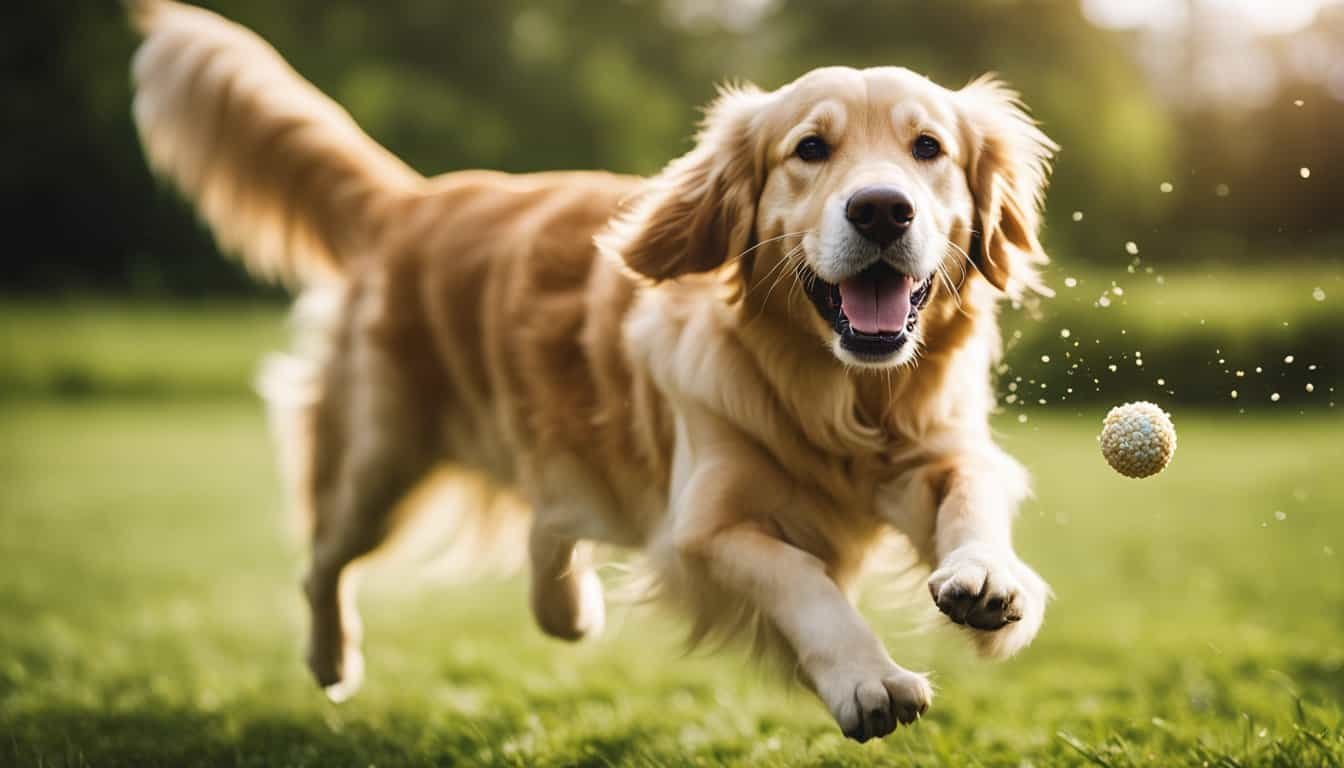
Frequently Asked Questions
https://www.youtube.com/watch?v=TWC9eT8Ou6E&embed=true
When do Golden Retrievers tails get fluffy?
Golden Retrievers start growing long hair on their tails at around 3 months of age. However, the exact time frame, hair length, and color shade may vary depending on the puppy’s genes. Some dogs might sport longer or heavier coats than others. Here is a source that explains more about the timing and growth of long hair on Golden Retrievers.
What is the hair growth rate of Golden Retrievers after shaving?
Golden Retrievers have a double coat, which means they have two layers of fur. The top layer is called the guard hair, and the bottom layer is called the undercoat. If you shave a Golden Retriever, the guard hair will grow back first, and it may take up to 18 months for the undercoat to grow back to its full length. It is not recommended to shave a Golden Retriever because it can damage their coat and make it harder for them to regulate their body temperature. Here is a source that explains more about the coat stages of Golden Retrievers.
What are the different coat types of Golden Retrievers?
Golden Retrievers have two main coat types: the English Cream Golden Retriever and the American Golden Retriever. The English Cream Golden Retriever has a lighter coat color and a longer, fluffier coat. The American Golden Retriever has a darker coat color and a shorter, less fluffy coat. Here is a source that explains more about the differences between the two coat types.
What are some common coat problems in Golden Retrievers?
Golden Retrievers are prone to certain coat problems, such as matting, shedding, and hot spots. Matting occurs when the fur becomes tangled and knotted, and it can be painful for the dog. Shedding is a natural process, but excessive shedding can be a sign of an underlying health issue. Hot spots are areas of the skin that become inflamed and infected, and they can be caused by allergies or poor grooming habits. Here is a source that explains more about common coat problems in Golden Retrievers.

Do Golden Retrievers have soft fur?
Yes, Golden Retrievers have soft fur. When they are puppies, their fur is fine and soft to the touch. As they grow older, their fur becomes thicker and coarser, but it still retains its softness. It is important to regularly groom a Golden Retriever to keep their coat soft and healthy. Here is a source that explains more about grooming a Golden Retriever.
When do Golden Retrievers develop their guard hair?
Golden Retrievers start developing their guard hair at around 5-6 months of age. The guard hair is the top layer of their coat, and it is responsible for protecting them from the elements. As they grow older, their guard hair becomes thicker and more coarse. It is important to regularly groom a Golden Retriever to keep their guard hair healthy and to prevent matting. Here is a source that explains more about the hair growth timeline of Golden Retrievers.

